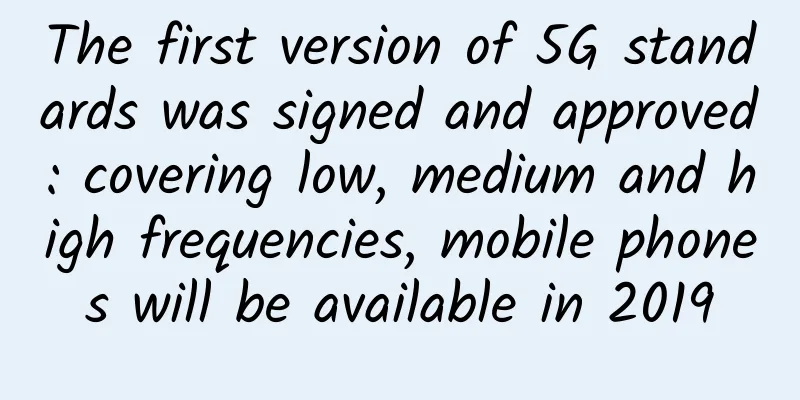The first version of 5G standards was signed and approved: covering low, medium and high frequencies, mobile phones will be available in 2019

|
According to Fierce Wireless, 3GPP (a mobile communications standardization organization) officially signed and approved the first version of the 5G NSA (Non-Standalone) standard in Lisbon, the capital of Portugal today. This means that hardware manufacturers can start device development work now. According to the 3GPP plan, 5G standards are divided into two types: NSA and SA (Standalone). Among them, 5G NSA networking is a transitional solution, which mainly aims to increase the bandwidth in hot spots. It has no independent signaling plane and relies on 4G base stations and core networks. The standard formulation progress is relatively faster. The SA standard is scheduled to be signed and approved in June next year. For example, the version led by China Mobile will also be completed during the same period. Since the standards text will not be available for download until later this week, 3GPP only revealed that the threshold for 5G NSA calls in the spectrum is very wide, ranging from 600~700MHz down to 50GHz (which Qualcomm calls millimeter wave). According to the plan of the Ministry of Industry and Information Technology, my country's 5G bearer frequency band is the Sub 6GHz intermediate frequency, which is also covered by this standard. Previously, netizens exposed the 5G baseband reserve of Qualcomm/Huawei/Intel/Samsung, and the progress and technical level are similar. Currently, Qualcomm has confirmed that the first 5G mobile phone will be launched in the first half of 2019, while Huawei will be launched in the second half of the year. If nothing unexpected happens, the first large-scale indoor and outdoor commercial use of 5G will be at the Pyeongchang Winter Olympics in South Korea next year. Image from 3GPP official website |
<<: Five best practices for improving network uptime
>>: Improving efficiency and reliability using SDN in multi-layer networks
Recommend
No need for WiFi, can you surf the Internet with light? China releases the first visible light communication chip
No need for WiFi, can you surf the Internet with ...
How 5G contributes to Industry 4.0
During the COVID-19 pandemic, industries across t...
Developing 5G communications requires testing first
"The 5G era is coming. China is seeking to &...
PwC: By 2030, 5G will contribute $1.3 trillion to global GDP growth
On February 10, foreign media reported that a rep...
iONcloud 10% off in April, San Jose/Los Angeles/Honolulu/Dallas data centers
iONcloud is a cloud hosting platform established ...
China Unicom's mixed ownership reform is the trigger for the restructuring of the telecommunications industry order
How will China Mobile and China Telecom respond t...
TripodCloud: San Jose CN2 GIA line KVM half year 39 US dollars, CN2 GIA large hard disk VPS half year 44 US dollars
TripodCloud is a Chinese VPS service provider fou...
The Bluetooth market will grow steadily in the future, and the Bluetooth SIG will continue to make efforts
On April 15, the Bluetooth Special Interest Group...
Huawei 5G Power enables a green and fully connected world
[Shenzhen, China, April 17] At the 2019 Huawei Gl...
5 tips for hosting a successful virtual meeting
Running a virtual meeting requires a very differe...
JustVPS: 30% off UK VPS/20% off all VPS, unlimited traffic in multiple data centers in the United States/France/Singapore/Russia/Hong Kong, China
JustVPS.pro bought a VPS in London, UK, last Dece...
Sangfor Launches SIP Falcon Edition: A Lightweight and Cost-Effective Full-Flow Threat Analysis System
In recent years, with the deepening of informatiz...
Let’s talk about the technological advances needed to realize the 6G vision
The next generation of cellular technology will b...
LOCVPS Los Angeles CN2 line XEN architecture is online, Los Angeles/Osaka, Japan 30% off
The Spring Festival holiday is coming to an end. ...
The story behind 2.5 million 5G users in 5 months
[[275646]] South Korea's 5G development speed...









